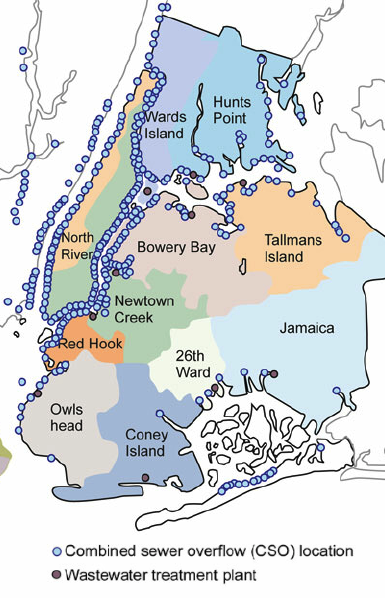When it rains in New York City, rain and debris from city streets mixes with wastewater containing raw sewage and other pollutants and overload the city’s antiquated combined sewage and stormwater system, dumping the polluted brew into the waters around the five boroughs. Each year on average 70 of these “combined sewage overflows” (CSOs) occur, dumping 27 billion gallons of polluted water creating unacceptably high levels of marine debris, fecal bacteria and nitrogen pollution in many NYC waterways.

The waters that receive these disgusting CSO dumps include the East River, Bowery Bay, Flushing Bay, Little Neck Bay, the Bronx River, the Hutchinson River, Eastchester Bay and Pelham Bay – all of which flow into Long Island Sound. Together these waters host 12 swimming beaches and many other points of public access.
The fecal bacteria in raw sewage poses a serious threat to public health. The high nitrogen loads in wastewater triggers algae blooms and low oxygen dead zones where fish can’t survive.
Save the Sound is working with city, state and federal authorities to reduce the CSOs that enter the East River and other Long Island Sound waters. In April 2017, as part of a coalition of New York City and regional environmental organizations, we initiated a legal action against the U.S. Environmental Protection Agency (EPA) for failing to protect the health of people who swim, boat and fish in New York City waters.
The groups, represented by Pace Environmental Litigation Clinic, are asking a federal court to order EPA to adopt the most recent and up-to-date clean water standards to protect New Yorkers’ health, unless the state promptly does so on its own. New York State is one of only 3 states that has yet to adopt EPA’s 2012 clean water standards.
Click here for the legal filing >
See more legal updates from Westchester and Mount Vernon>


this problem also occurs in towns like Glen Cove, and other Long Island or New York towns. How do we approach each and every town or City to make the case?